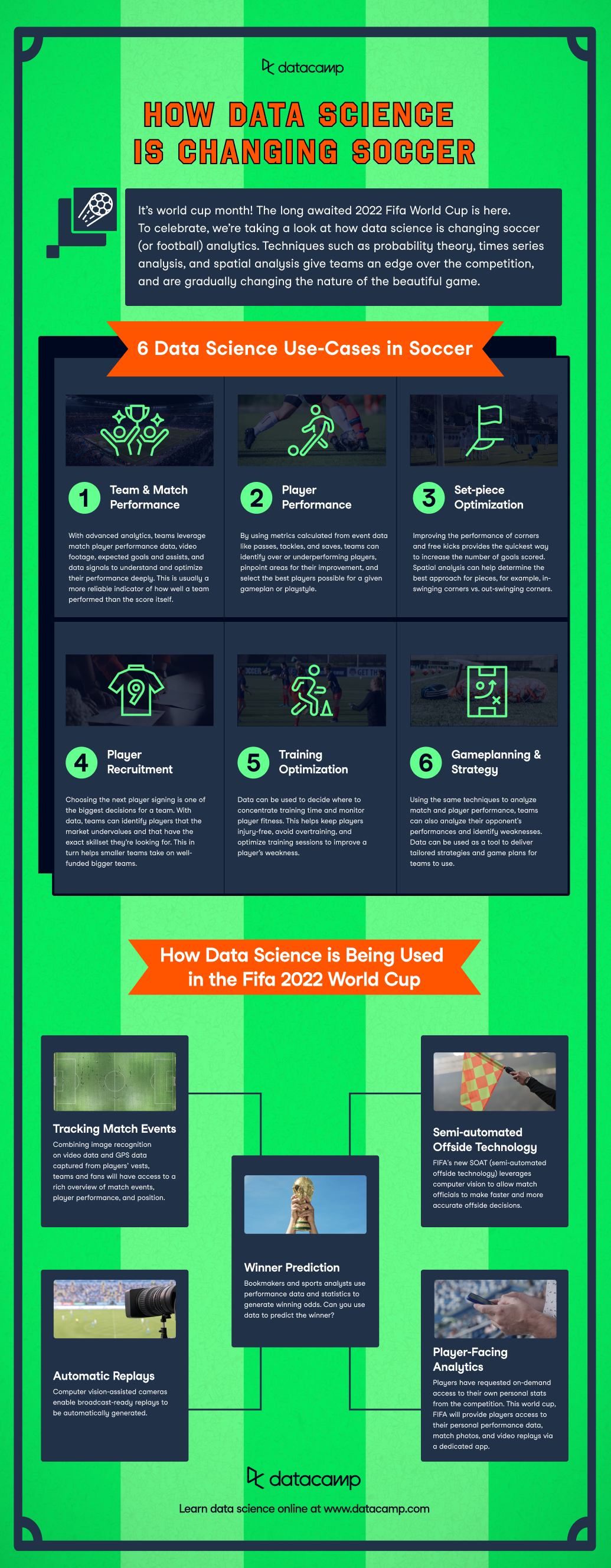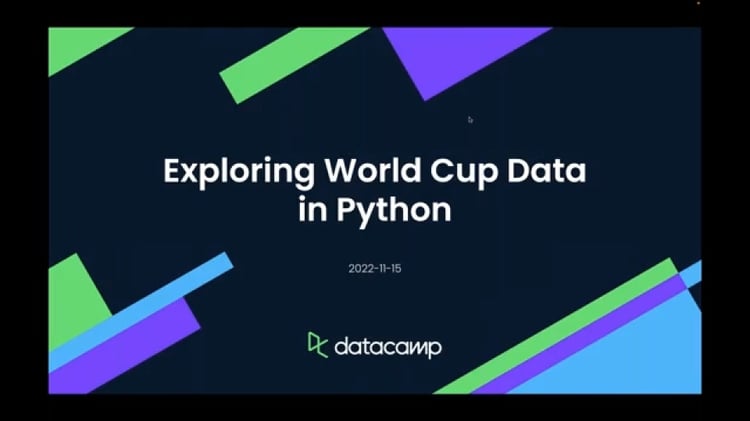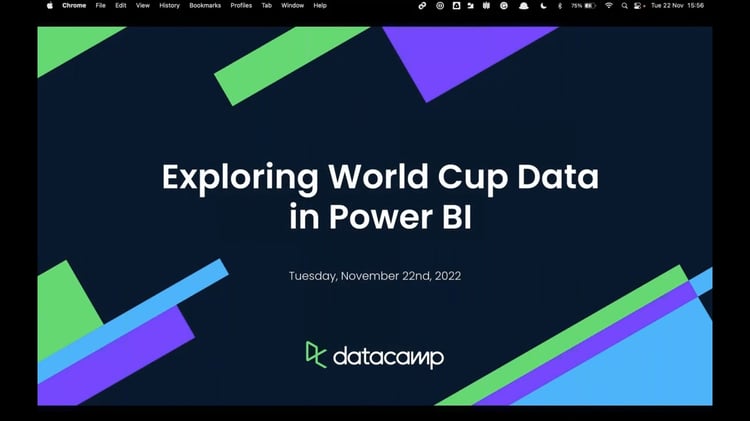It’s world cup month! The long-awaited 2022 Fifa World Cup is here. To celebrate, we’re looking at how data science is changing soccer (or football) analytics. Techniques such as probability theory, times series analysis, and spatial analysis give teams an edge over the competition and are gradually changing the nature of the beautiful game.
For a downloadable version of this infographic, press on the image above
6 Data Science Use-Cases in Soccer
Team & Match Performance
With advanced analytics, teams leverage match player performance data, video footage, expected goals and assists, and data signals to understand and optimize their performance deeply. This is usually a more reliable indicator of how well a team performed than the score itself.
Player Performance
By using metrics calculated from event data like passes, tackles, and saves, teams can identify over or underperforming players, pinpoint areas for their improvement, and select the best players possible for a given gameplan or playstyle.
Set-piece Optimization
Improving the performance of corners and free kicks provides the quickest way to increase the number of goals scored. Spatial analysis can help determine the best approach for pieces, for example, in-swinging corners vs. out-swinging corners.
Player Recruitment
Choosing the next player signing is one of the biggest decisions for a team. With data, teams can identify players that the market undervalues and that have the exact skillset they’re looking for. This, in turn, helps smaller teams take on well-funded bigger teams.
Training Optimization
Data can be used to decide where to concentrate training time and monitor player fitness. This helps keep players injury-free, avoid overtraining, and optimize training sessions to improve a player’s weakness.
Gameplanning & Strategy
Using the same techniques to analyze match and player performance, teams can also analyze their opponent's performances and identify weaknesses. Data can be used as a tool to deliver tailored strategies and game plans for teams to use.
How Data Science is Being Used in the Fifa 2022 World Cup
Tracking match events
Combining image recognition on video data and GPS data captured from players’ vests, teams and fans can access a rich overview of match events, player performance, and position.
Automatic Replays
Computer vision-assisted cameras enable broadcast-ready replays to be automatically generated.
Semi-automated Offside Technology
FIFA's new SOAT (semi-automated offside technology) leverages computer vision to allow match officials to make faster and more accurate offside decisions.
Player-Facing Analytics
Players have requested on-demand access to their own personal stats from the competition. This world cup, FIFA will provide players access to their personal performance data, match photos, and video replays via a dedicated app.
Winner Prediction
Bookmakers and sports analysts use performance data and statistics to generate winning odds. Can you use data to predict the winner? To read our predictions, check out this article.




